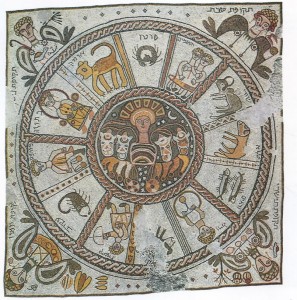From Temple to Synagogue
 Excerpted from Lawrence H. Schiffman, From Text to Tradition, Ktav Publishing House, Hoboken, NJ, 1991.
Excerpted from Lawrence H. Schiffman, From Text to Tradition, Ktav Publishing House, Hoboken, NJ, 1991.
The most central aspect of the transition from pre-destruction to post-destruction times was the change of the center of worship from Temple to synagogue. This change must be fully understood to grasp the essence of Rabbinic Judaism. In Temple times, the Jerusalem Temple was understood to be a place where the Divine Presence could always be approached. In other words, it was the locus of God’s abiding in Israel, in fulfillment of the biblical statement, “I will dwell among them” (Exod. 25-8). The sudden disappearance of this avenue of communing with God was a tragedy of awesome dimensions.
The question of the discontinuance of animal sacrifice is more complex. In the years leading up to the revolt and the destruction, animal sacrifice was certainly regarded as the highest form of worship. Yet it was not the only form. Evidence of various kinds, including that of the Dead Sea Scrolls, demonstrates that the role of prayer was constantly increasing in Second Temple times. In the last years of the Second Commonwealth, prayer had so extensively found its way into the Temple service that it was assigned a special place, or proseuche (Greek for “prayer room”), in the Jerusalem Temple.
We should not be surprised at the development of the synagogue at this time. There is no evidence for the synagogue as an institution in Palestine before the first century C.E. The synagoge mentioned in Greek inscriptions in the Diaspora from Hellenistic times was not a prayer area (proseuche) but, rather,the organization that managed the affairs of the local Jewish community. Synagogues in the sense of a place for prayer may first be observed in Palestine in the first century C.E. (Masada, Herodion, and Gamla), and probably somewhat earlier in the Diaspora. From then on we can trace the development of the synagogue up through the end of the talmudic period.
Where did Jews pray before the rise of synagogue buildings? We cannot be sure. Many scholars theorize that the synagogue had its origins in the Babylonian exile when the Jews first had to adapt to the lack of a Temple and animal sacrifice. Yet there is absolutely no evidence, literary or archaeological, for this theory. On the other hand, the history of postbiblical prayer begins early in the Hellenistic period, and perhaps even before. There must have been places for prayer, maybe in the town squares, but this is simply speculation.
Clearly, however, the concomitant development of the synagogue as an institution, along with the gradual ascendancy of prayer over sacrifice as a means of worship, prepared Judaism for the new situation brought about by the destruction of the Temple. By the time the Temple was taken away, its replacement had already been created. From that time on the daily prayers would serve in place of sacrifice, and the synagogue, the “Temple in miniature,” would replace the central sanctuary in Jerusalem. Jews would look forward to the rebuilding of the Temple and the restoration of its system of worship. But the Jewish people was equipped with a portable system of worship which it could carry throughout its wanderings, and which would preserve the closeness to God that had once been symbolized and embodied in the Jerusalem Temple.



